Introduction: Riding the Wave of Paddle Boarding Popularity
Paddle boarding has not only captured the hearts of water sports enthusiasts but has also seen a meteoric rise in popularity.
According to the Outdoor Industry Association, over 3.2 million people participated in stand-up paddle boarding (SUP) in 2021, a 12% increase from the previous year. This surge is fueled by the sport’s versatility and the appealing sense of freedom it offers on the water.
Whether you’re gently gliding across a serene lake or bravely navigating the choppy ocean waves, the key to a fulfilling experience starts with selecting the right SUP. As paddle board designs become more sophisticated, the decision-making process grows more complex.
On a personal note, a few years ago, when paddle board started emerging, I never thought it would become the phenomenon it is today. But I also have to admit, despite my 10 year career in international kayaking, when I first started to enjoy paddleboarding, it felt really different and great. If I had to pick just one word to define it, I would use the world : CHILL. And cherry on top of the cake, you don’t need to be a sports champ’ to master the art of keeping your balance on those big boards.
I remember one day, I was visiting a friend in Geneva, in Switzerland. They have a big lake there, with a view to the Alps, the Mont Blanc. It is wonderful! We rented some paddles and went along the shore. What an outstanding feeling of freedom, of silence and tranquility! In addition to that, we could enjoy a remarkable and unexpected view of the amazing villas along the coast (that you don’t normally see from the other side).
If you wish to build this kind of souvenirs, chill, discover beautiful landscape and nature from water, paddleboard is really something you should consider. Paddle in itself is just so relaxing, it is a kind of active and contemplating meditation.
But before you start paddling, this comprehensive guide will steer you through all the crucial choices to consider, from board types and sizes to the nitty-gritty of board materials and accessories, ensuring you find your perfect match.
How To Choose A Stand Up Paddle Board For Beginner
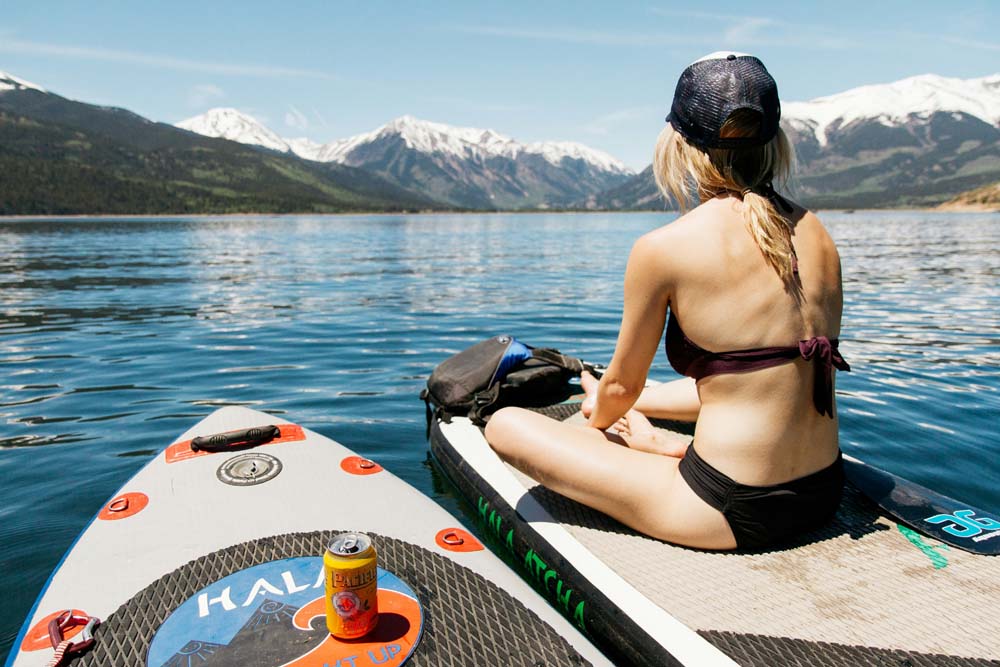
Solid vs. Inflatable: What’s the Best Fit for You
When choosing between solid and inflatable paddle boards, consider more than just the price. Solid boards, often made from materials like epoxy, are celebrated for their speed and agility. Needless to say that those boards are faster than inflatable boards.
These boards are ideal for those who enjoy surfing waves or racing through water. Not only do they perform well, but their durability is notable. Boards constructed in the 1990s are still in use today, a testament to their longevity, especially in harsh conditions where inflatables might falter.
In contrast, inflatable boards are champions of convenience. Easy to store and transport, they are perfect for city dwellers or those who love to travel with their gear. However, they do have downsides.
The materials used in inflatables, such as PVC, can become brittle in tropical climates, and the glue used in their construction may deteriorate over time. This can significantly shorten the lifespan of an inflatable board compared to its hardboard counterpart.
When choosing a paddle board, one of the primary decisions you’ll face is between solid (hard) boards and inflatable boards. Each type offers distinct advantages depending on your needs, storage options, and where you plan to use them. Here’s a deeper look into the benefits of each:
Solid Paddle Boards Or Hard Paddle Boards
1. Performance and Stability
- Superior Performance: Solid boards are generally faster and more agile than their inflatable counterparts. They offer better glide and are more responsive to shifts in weight, which makes them ideal for advanced maneuvers in surfing, racing, or touring.
- Enhanced Stability: Due to their rigid construction, solid boards typically provide a more stable platform, which is particularly beneficial for activities like yoga or fishing, where extra stability is crucial.
2. Durability
- Longevity: Solid boards, especially those made from epoxy or fiberglass, are known for their durability. They can withstand bumps against rocks and other rough contacts without significant damage.
- Maintenance: While solid boards require care to avoid dings and scratches, they don’t need the periodic inflation checks that inflatables do, and repairs, when needed, are often straightforward.
3. Better for Waves – Boards designed for surfing may have specific fins attached to the board to improve handling.
- Wave Performance: For paddle surfers, solid boards are usually preferred because they offer better performance in waves. The rigidity of solid boards allows for quicker, sharper turns and more control when riding a wave.
Inflatable SUP or Paddle Boards
1. Portability
- Easy Transportation and Storage: Inflatable boards can be deflated, rolled up, and stored in compact spaces, making them ideal for those with limited storage space or those who travel frequently. This portability also makes them a favorite among adventurers who like to carry their boards to remote locations.
2. Accessibility
- Beginner-Friendly Inflatables are often wider and provide a very stable surface, ideal for beginners learning to balance, demonstrating how board volume and weight capacity are crucial in selecting the right equipment. Their soft surface can also be less intimidating for new paddlers, reducing the fear of falls or bumps.
3. Versatility
- Multi-Use Environments: Inflatable boards are highly versatile and can be used in various water conditions, from calm lakes to gentle rivers. Their durability against punctures when properly maintained makes them suitable for a variety of adventures.
4. Reduced Impact
- Comfort: The softer surface of inflatable boards can be more comfortable for longer paddling sessions. This is particularly noticeable in activities like yoga, where you might prefer a softer surface beneath you.
>>> Browse our top picks for inflatable SUPs and find the perfect board to float your boat! Start exploring now and get ready to paddle with the best!
Considerations Based on Usage To Choose A Stand Up Paddle
- Travel and Storage: If you travel frequently or lack storage space, an inflatable might be the best choice.
- Performance Needs: If you are interested in paddle boarding activities that require optimal performance, like racing or surfing, a solid board might be more suitable.
- Budget: In general, solid boards can be more expensive than inflatables, though prices vary widely based on brand, materials, and design.
In summary, the choice between solid and inflatable paddle boards hinges on how you plan to use the board, where you’ll be using it, and what your priorities are in terms of performance versus portability. Both types have their places in the world of paddle boarding, and the right choice will ensure you get the most enjoyment out of your time on the water.
In the next section, we’ll delve into the variety of specialized boards available, helping you choose the right type based on your preferred water activities.
Which Paddle Board is right For You : Specialty Boards for Every Adventurer
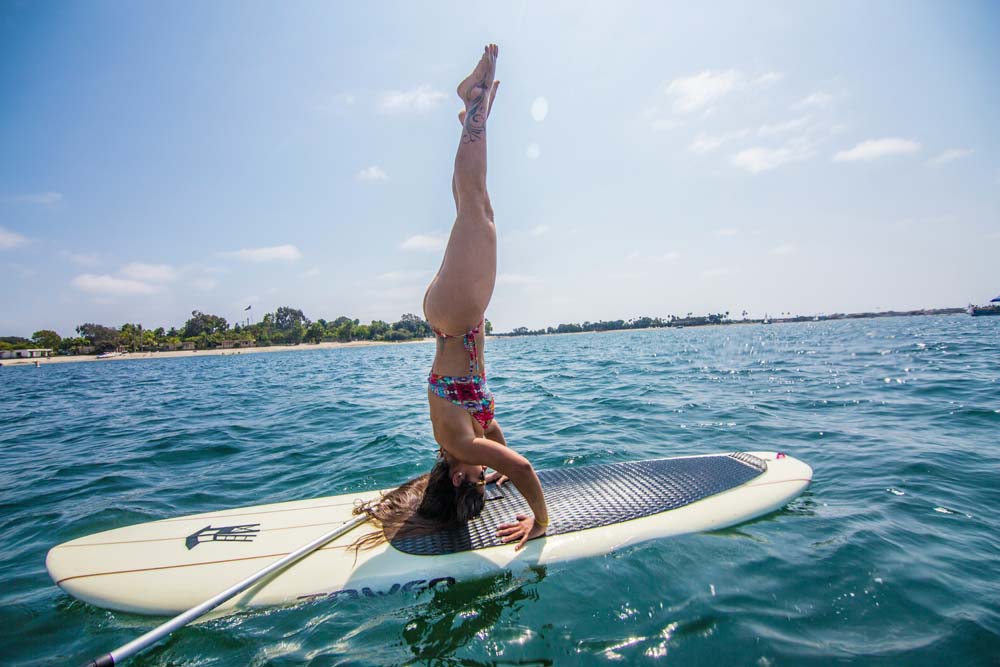
When selecting a paddle board, it’s essential to consider the specific activities you intend to pursue. The type of board you choose can greatly enhance your experience on the water by matching its design to your adventure needs.
- Touring Boards: Designed with a pointy bow and a displacement nose, touring boards are built for speed and efficiency in flat waters like lakes and calm rivers. Their streamlined shape helps you cut through the water with ease, making them ideal for long-distance explorations and fitness paddling.
- Yoga Boards: These boards are wider and more stable, creating a floating platform that is akin to a yoga studio on water. The increased stability is crucial for maintaining poses and balance during your practice, making them perfect for both beginners and experienced yogis seeking a unique outdoor experience.
- Fishing Boards: Equipped with additional features such as mounts for rods and ample storage for gear, fishing boards are tailored to the angler’s needs. They provide a stable and spacious platform to cast and reel in your catch without compromising on mobility.
Sizing Up the Right Board : board length, board width, SUP size
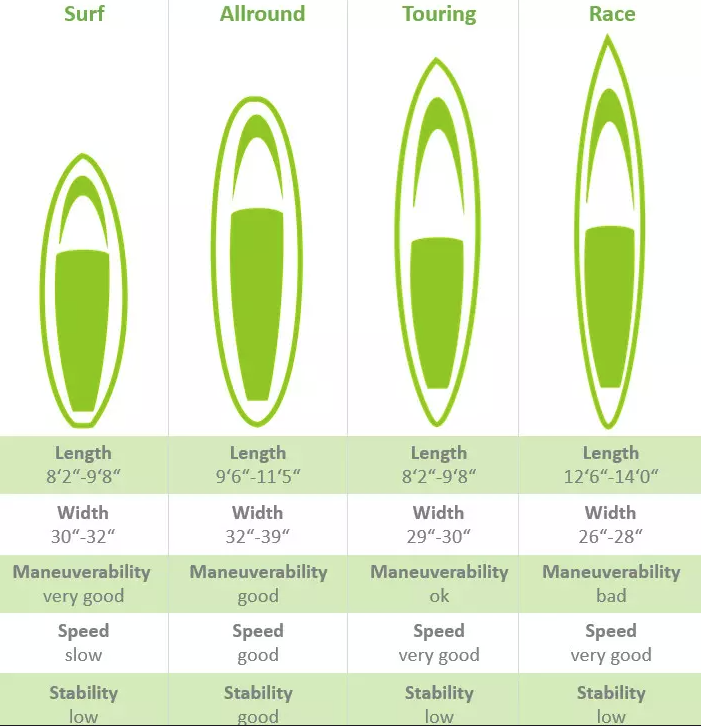
Source : https://www.paddleventure.com/choosing-the-right-stand-up-paddle-board/
Choosing the right size and dimensions for your paddle board is critical for ensuring it performs well and matches your body type and paddling goals.
Length Matters: Speed vs. Maneuverability – understanding board length can help you choose a stand up paddle board that balances these two crucial aspects.
- Long Boards: Typically, longer boards (above 10’6″) are favored for their ability to glide smoothly across the water, making them excellent for racing and touring. They offer better straight-line tracking and speed. But longer boards are more difficult to maneuver.
- Short Boards: Boards shorter than 10’6″ are more agile, making them ideal for surfing and more playful water activities. These allow for easier turning and quicker response to changes in direction, suitable for handling waves and tight maneuvers. If you want to paddle and have fun catching waves, shorter boards are the best.
Width and Thickness: Stability Meets Performance
- The width of a board greatly influences its stability. Wider boards, generally about 32 inches or more, are recommended for beginners or those using their boards for activities like yoga, where balance and board width are key. However, a narrower board (around 29-31 inches) can be faster and more suitable for experienced paddlers looking for speed and efficiency.
- Thickness affects the board’s overall volume and, consequently, its buoyancy and weight capacity. Boards with higher volumes can support more weight, making them ideal for larger paddlers or those who plan to carry gear on their adventures.
Volume and Capacity: Float Your Boat
- Volume is perhaps one of the most crucial considerations when selecting a paddle board. It should be enough to support your weight plus any additional gear without sacrificing stability. For example, a 200-pound individual might look for a board with around 170 to 200 liters of volume to ensure it floats efficiently.
- The volume-to-weight ratio should be balanced to keep the board’s rails about halfway underwater, providing a stable yet responsive platform.
Choosing a SUP Paddle by Skill Level
Selecting the right paddle board can significantly impact your development and enjoyment in the sport. It’s crucial to choose a board that matches your current skill level while also considering your future ambitions.
- Beginners: New paddlers should look for boards that are wider and longer with generous volume. These boards offer a stable and forgiving ride, which is essential as you learn to balance and control your movements on the water. A board that’s approximately 10 to 12 feet long and 32 inches wide is typically ideal for beginners.
- Intermediate PaddlersAs you gain confidence and skill, transitioning to a board that is slightly narrower and shorter can enhance your agility and speed, epitomizing the journey to find the right board as skills evolve. These boards often range from 9 to 11 feet and provide a good balance between stability and performance, allowing for more challenging maneuvers and faster paddling.
- Experts: Experienced paddlers may opt for streamlined, high-performance boards that are designed for specific activities such as racing or advanced wave riding. These boards are generally narrower and have a more complex shape and design to optimize for speed and control in challenging conditions.
Design Features That Impact Performances Of The Paddle Boarder
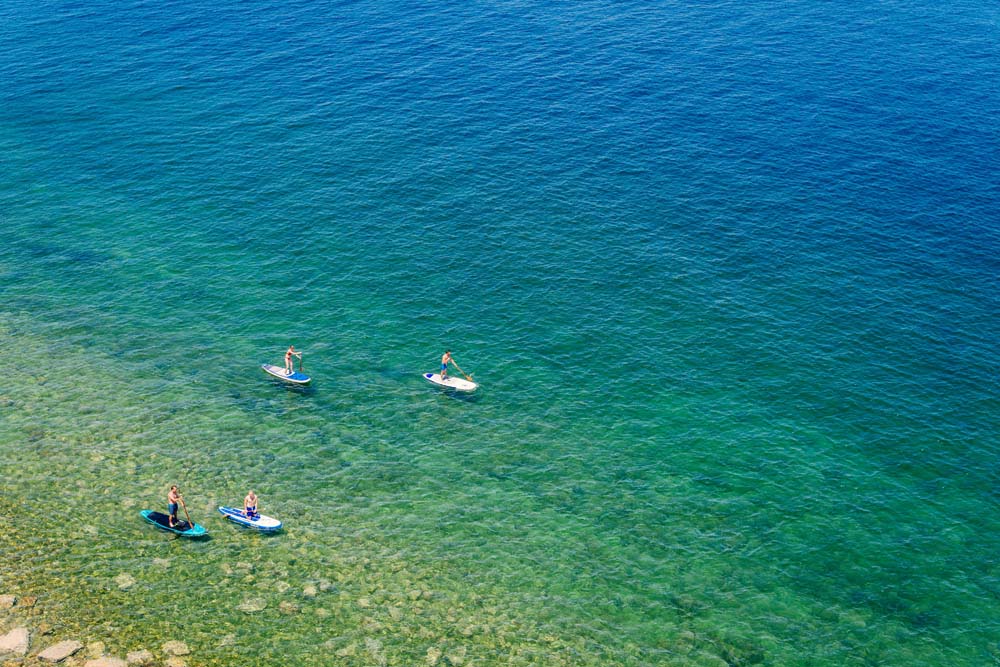
Board Shape influences performance, with choices ranging from wider bases for stability to thinner boards for speed and agility. and Rocker Line
- Board Shape: The outline of the board, including the nose and tail shape, influences how the board handles in the water. Boards with pointed noses and tails are generally more maneuverable, which is beneficial for surfing.
- Rocker Line: This refers to the curvature of the board’s bottom. A board with too much rocker will be slow and plow through the water, making it difficult to paddle, while too little rocker makes it difficult to handle in waves. The ideal rocker helps the board adapt to the water conditions it’s used in.
Rail Shape and Board Construction
- Rail Shape: Thinner rails allow the board to carve into waves more effectively, making them ideal for surfing. Thicker rails provide more stability and are suited for all-around recreational use.
- Construction: The materials and construction method impact the board’s weight, strength, and cost. Carbon fiber and PVC sandwich constructions are lightweight and strong, but are more expensive.
Tailored SUP Board for Diverse Activities : How Do You Plan To Use Your SUP?
The environment in which you plan to use your paddleboard plays a crucial role in the type of board you should choose. Each setting offers unique challenges and requirements.
- Ocean Boards: Crafted to handle the dynamic conditions of the ocean, these boards are designed with durability and agility in mind. They can manage robust waves and windy conditions, often featuring tapered noses and tailored fin setups to enhance performance in the surf.
- Lake Boards: Stability is key when paddling on lakes, where the water is generally calmer. Lake boards are often wider with a large volume, providing a smooth and enjoyable ride. Their design prioritizes comfort and ease, making them ideal for leisure paddling and fitness activities.
- River Boards: River paddling requires a board that is durable and agile enough to navigate moving waters and potential obstacles. These boards are typically shorter for better maneuverability and are constructed with reinforced materials to withstand impacts.
Beyond the Basics: Board Features, Maintenance, SUP Fin
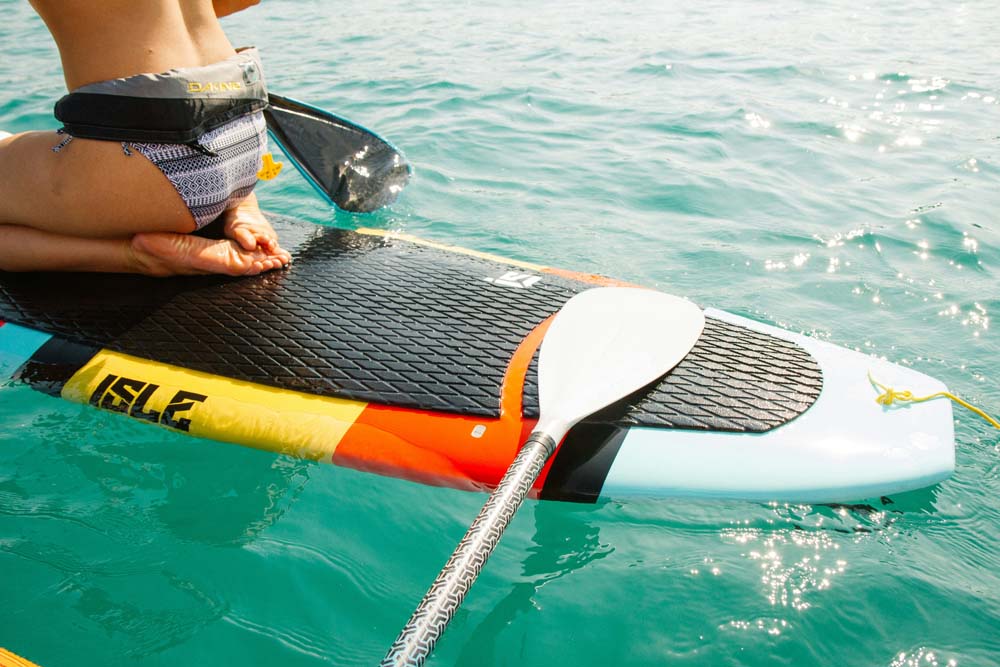
Once you’ve chosen the right board, understanding its features and how to maintain it can significantly enhance your paddle boarding experience.
Fin Systems and Deck Pads:
- Fin Systems: The choice of fin setup can drastically affect the performance of your board. Single fin setups are great for maintaining a straight path, making them ideal for touring and race boards. Multi-fin setups offer better control and are preferred for surfing and rough water conditions.
- Deck Pads: A comfortable deck pad is essential for longer paddling sessions. It provides the necessary grip and reduces fatigue in your feet and legs. Pads vary in texture and thickness, so choose one that offers comfort without compromising on control.
Paddles, Leashes and Accessories:
So, you’ve picked out your paddle board and you’re almost ready to hit the water. But wait, there’s one more essential piece of gear you’ll need—a good paddle. Choosing the right paddle is just as important as picking the right board because it can really make or break your paddling experience.
>>> If you want to know more about picking the right paddle for you, let’s walk through how to find the perfect paddle for your adventures on the water.
Paddles significantly influence your paddling efficiency. They come in various materials, such as aluminum, fiberglass, or carbon fiber, each offering different balances of weight and stiffness. Lighter paddles reduce arm fatigue, allowing for longer trips, whereas stiffer paddles provide more power per stroke.
Essential accessories like bungee cords for securing gear, leash for safety, and a board cover for protection when not in use can make your paddling experience more convenient and enjoyable.
Finding the Perfect Leash for Your Paddle Board. Before you jump on your board and paddle away, let’s talk about an important piece of safety gear: the paddle board leash. It’s a simple tool, but choosing the right one can make a big difference in your paddling experience. Why You Need a Leash: First off, a leash keeps your paddle board attached to you at all times. If you fall off (and hey, it happens to everyone), your board won’t drift away. This is not just about convenience; it’s about safety, especially in strong currents or winds.
Choosing the Right Type: Leashes come in a few different styles, and the right one depends on where you’ll be paddling Let’s see what leash suits your needs here.
Choosing the Right Paddleboard Pump. Don’t forget a reliable pump for your inflatable paddleboard! Here’s what to consider:
- Manual vs. Electric Pumps: Manual pumps are great for a pre-paddle workout and easy portability. Electric pumps offer convenience and ease, perfect for frequent paddlers.
- Essential Features: Look for a pump with a precise pressure gauge and multiple nozzle attachments to fit different boards.
>>> With the right pump, you’ll have your board ready in no time. Choose one that suits your paddling lifestyle and enjoy seamless inflating for more time on the water!
Maintenance: Regular maintenance extends the life of your paddle board. Rinse your board with fresh water after each use to prevent salt and dirt build-up, check for dents and damage, and perform necessary repairs promptly to keep the board in optimal condition.
Smart Shopping: Where to Buy Your SUP
Invest in quality by choosing reputable retailers known for their robust warranties and customer support. Steer clear of suspiciously cheap boards; they often compromise on quality and durability. Prioritize trying out different boards, if possible, to find the perfect fit for your style and needs.
>>> Take a look at our selection of boards to find your perfect match and start enjoying your time on the water as soon as you receive it!
Conclusion: Setting Sail on Your Paddle Boarding Journey
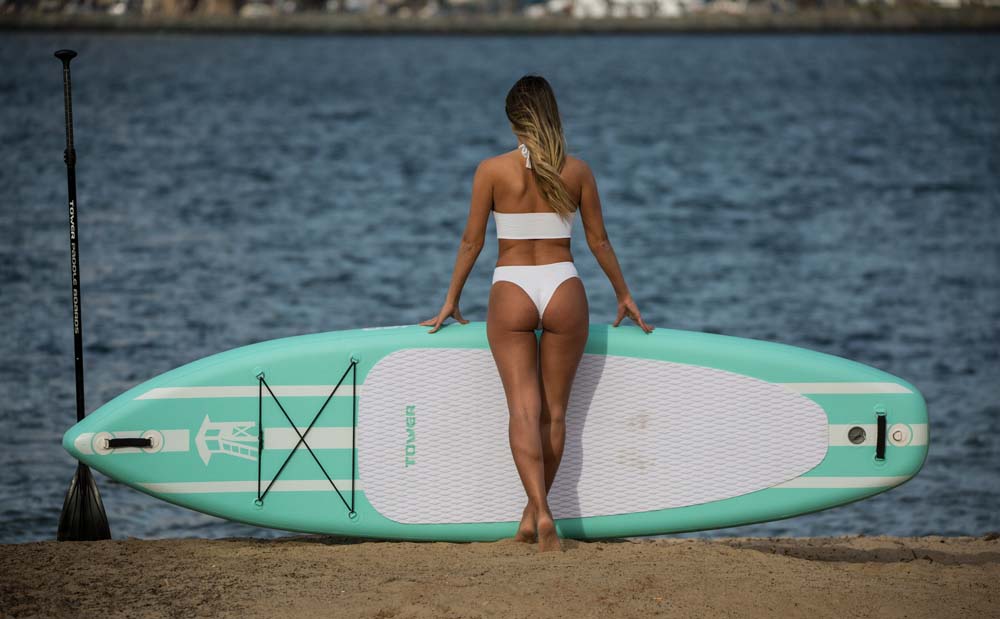
Choosing the perfect stand-up paddle board involves balancing your physical needs, skill level, and the specific activities you love. By understanding the various board options and their optimal uses, you’re well-equipped to make a choice that will enhance your paddle boarding fun for years to come.
Remember, a well-chosen board not only improves your performance but also ensures safety and longevity in the sport. Set sail on your paddle boarding journey with confidence, equipped with the knowledge to choose, maintain, and enjoy your perfect board.
Frequently Asked Questions About Choosing the Right Paddleboard
Choosing the right paddleboard can be as thrilling as your first glide across the water. Whether you’re a newbie to this fantastic sport or a pro paddler scouting for an upgrade, here’s a simplified guide to assist you in making the best choice among the plethora of options available.
1. Choosing a Paddle : What Type of Paddleboard Is Best for Me?
The type of paddleboard you should buy largely depends on your paddling dreams and aspirations! Here’s a quick look at what might suit you:
- All-Around Boards: Jack of all trades! Perfect for beginners due to their versatility.
- Touring Boards: Love long paddles? These are designed for distance and efficiency.
- Racing Boards: If speed is your need, these are built to compete.
- Yoga Boards: Wider and stable, ideal for those who want to mix fitness with pleasure.
2. How Do I Choose the Right Size Stand Up Paddle Board?
Size is crucial in finding your balance. Here’s how to choose:
- Length: Ranges from 10 to 14 feet. Longer boards are typically faster.
- Width: A wider board equals more stability; great for beginners!
- Volume and Weight Capacity: These will tell you how much weight your board can handle while still performing optimally.
3. Should I Get an Inflatable Paddle Board or a Solid Paddleboard?
Each has its perks:
- Inflatable Paddleboards (iSUPs)Easy to store and transport, often more affordable, and kinder when you fall off your wide board.
- Solid Paddleboards: For those seeking top-notch performance and speed.
4. What About Paddleboard Construction and Materials?
The build of your board affects everything from performance to price:
- EPS Foam: Lightweight and the norm in solid boards.
- PVC: Commonly used in inflatables.
- Fiberglass and Carbon Fiber: These are for the performance-focused, offering stiffness and lightness but at a higher cost.
5. What Additional Features Should I Consider?
Think about what could enhance your paddleboarding experience:
- Deck Pads: They add comfort and grip.
- Bungee Straps: Handy for securing gear.
- Handles: Make carrying your board a breeze.
- Fins: Essential for smooth steering and stability.
6. How Much Should I Budget for a Paddleboard?
Paddleboards vary in price from affordable to high-end luxury. Setting a budget will help streamline your choices and keep your wallet happy.
7. Where Will I Mostly Use My Paddleboard?
Your paddling environment is key:
- Calm Lakes: Stability might be your focus.
- Mild Rapids: Durability and maneuverability take priority.
- Open Seas: You’ll need a board that handles waves well.
Finding Your Perfect Match
Remember, choosing the right paddleboard is about balancing your needs, environment, and budget. It’s not just about the board; it’s about the experiences and adventures that await when you choose a stand up paddle. Happy paddling!



0 Comments